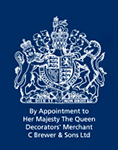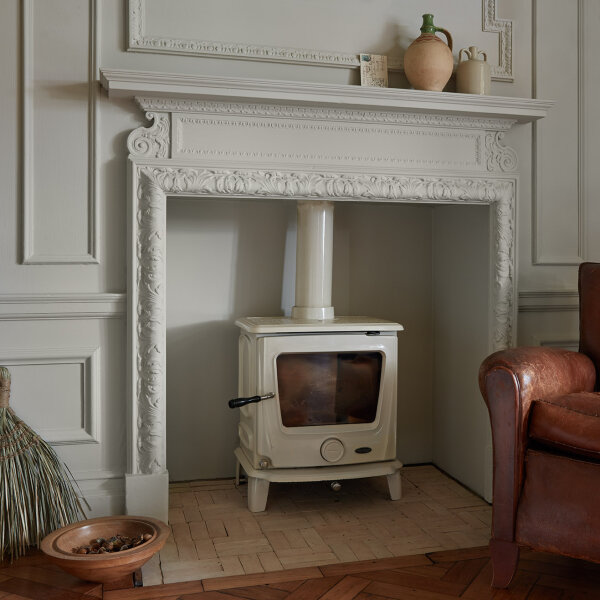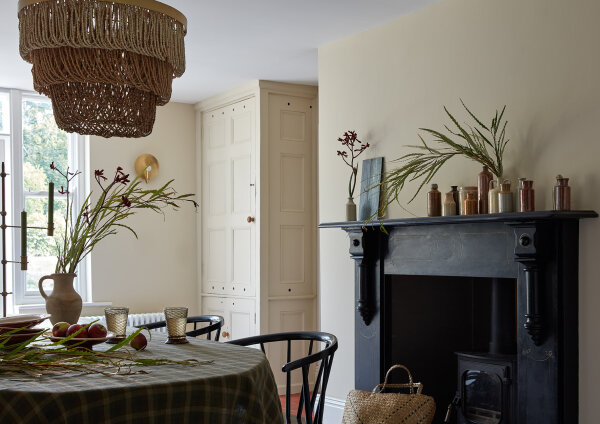How To Paint Behind a Wood Burner

July 14th, 2023
Painting behind a log burner or fireplace requires a specialist coating, as you will need a finish that can withstand the high temperatures. Here are some top tips with the right product to ensure walls stay fresh.
Why aren’t regular paint systems suitable?
When in use, woodburners can raise the temperature of nearby walls, mantles and surrounds to extreme temperatures. This poses problems for regular paint systems. From an aesthetic point of view, cracking, peeling and flaking and discolouration of surfaces is common. From a safety point of view, paints that aren’t designed for painting a fireplace are often combustible.
Photo courtesy of Earthborn. Colour, Donkey Ride.
If you have brick or plaster behind your wood burning stove, you may be wondering which type of paint to use. Earthborn Claypaint has a high clay content and is free from acrylics and oils. It can be used to paint bare brick and new plaster, including lime plaster, along with previously painted areas. Plus, it’s certified with a Class ‘0’ reaction to fire rating. This means it can withstand very high temperatures (up to 80°C) without affecting the paint. Its ultra flat matt finish also complements the soft glow of a fire, adding to the cosy feel of the space.
If you’re thinking of painting around your fireplace, Spring, Summer or Autumn are the best times of year to do this job.
Photo courtesy of Earthborn. Colour, Straw.
Surface preparation
To achieve the best results, ensure the surfaces to be painted are sound, clean, dry and dust-free. Remember to work in a well-ventilated area.
1. Clean surfaces thoroughly
Remove dirt, grease and any other surface contamination that could affect adhesion. Get rid of any dirt or soot using a vacuum and use a stiff wire brush to remove dirt from the crevices in brick work.
2. Protect the log burner
Cover your stove in plastic to make sure it is protected from any paint splashes.
3. Sanding surfaces
It is good practice to key the surface while wet using waterproof abrasive paper or pads if the surface is new or you are applying a water-based finish on top of solvent-based or glossy paint, or on a very hard and impermeable surface.
4. Surface defects
Fill surface defects with an appropriate filler. Depending on the paint you’re using you may need to spot prime any filled areas. Refer to the manufacturer’s instructions.
5. Stabilise the surface
Previous coatings that are blistering or unstable should be removed and a suitable stabilising or primer-sealer product used if necessary. Use Earthborn Isolating primer for dry stains and use two coats for heavy staining. Do not use on lime plaster/render as this can inhibit the breathable properties of the render.
6. Priming and painting
Earthborn recommends diluting the first coat of Claypaint with 20% water which is really important for more porous surfaces. You can then apply your second coat of Claypaint and you're good to go!







